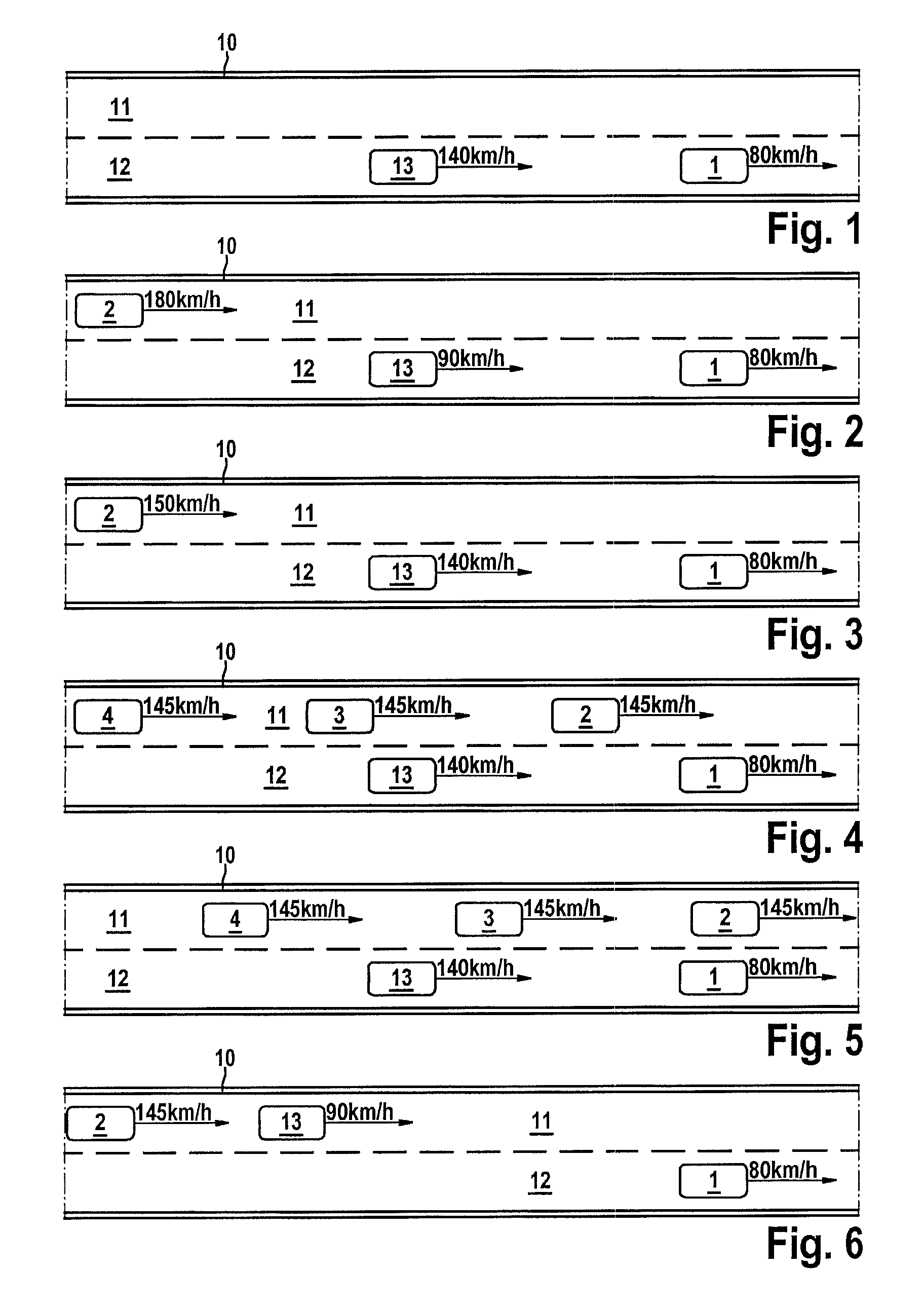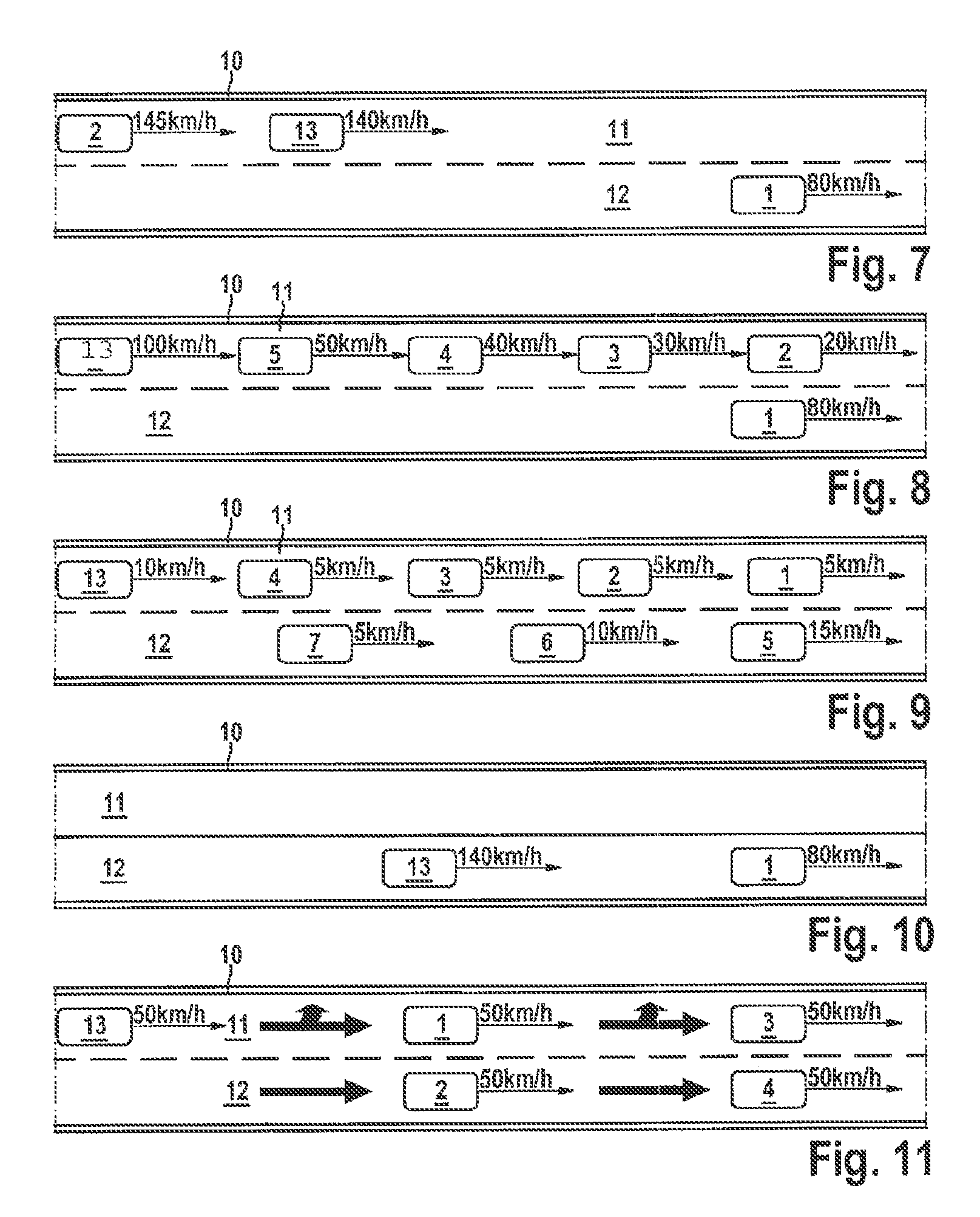Lane change assistant for optimizing the traffic flow (traffic flow assistant)
a technology of traffic flow and assistant, which is applied in the direction of traffic control systems, transportation and packaging, instruments, etc., can solve the problems of difficult to select a favorable point, difficult to estimate relative speed in relation to other vehicles, and difficulty in selecting a favorable point, so as to reduce the number of lane changes, reduce the lateral acceleration of the occupants, and keep the effect of low
- Summary
- Abstract
- Description
- Claims
- Application Information
AI Technical Summary
Benefits of technology
Problems solved by technology
Method used
Image
Examples
Embodiment Construction
[0047]The host vehicle is referred to as the “ego vehicle” and all other vehicles are referred to as “external vehicles” in the figures.
[0048]FIG. 1 shows a road 10 having multiple traffic lanes 11, 12, on which vehicles travel. Ego vehicle 13, which is equipped with the traffic flow assistant according to the present invention, approaches a significantly slower external vehicle 1. The traffic flow assistant may assist here in that it recommends a lane change, for example, 10 seconds before the ego vehicle would overtake external vehicle 1 at unchanged speed. Therefore, the driver does not change excessively early or excessively late into the passing lane. If there is only a slight speed difference between ego vehicle 13 and external vehicle 1, in contrast (for example, 12.
[0049]In FIG. 2, ego vehicle 13 approaches a somewhat slower external vehicle 1. If ego vehicle 13 would now change from lane 12 to adjacent lane 11, however, a hazard would occur due to significantly faster exter...
PUM
 Login to View More
Login to View More Abstract
Description
Claims
Application Information
 Login to View More
Login to View More - R&D
- Intellectual Property
- Life Sciences
- Materials
- Tech Scout
- Unparalleled Data Quality
- Higher Quality Content
- 60% Fewer Hallucinations
Browse by: Latest US Patents, China's latest patents, Technical Efficacy Thesaurus, Application Domain, Technology Topic, Popular Technical Reports.
© 2025 PatSnap. All rights reserved.Legal|Privacy policy|Modern Slavery Act Transparency Statement|Sitemap|About US| Contact US: help@patsnap.com



